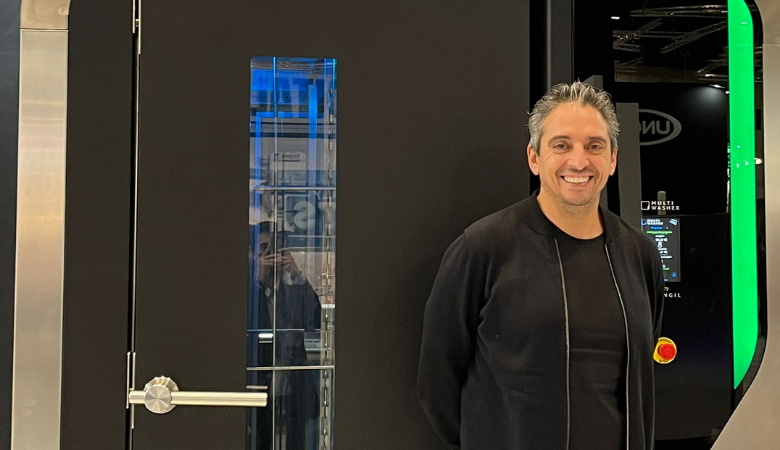Gestão / Artigos
Metodologia 8D: o poder de parar para resolver problemas
Com a Metodologia 8D, os erros deixam de ser resolvidos apenas com a intuição. Descubra como esta abordagem estruturada o prepara para qualquer problema.

 12 minutos de leitura
12 minutos de leitura
2022-11-17 17:07:10
Com a Metodologia 8D, os erros deixam de ser resolvidos apenas com a intuição. Descubra como esta abordagem estruturada o prepara para qualquer problema.
Mesmo com o planeamento mais rigoroso, os problemas surgem na vida de qualquer empresa. Muitos gestores tentam resolver de forma instintiva e imediata, fruto da pressão a que se encontram sujeitos num dia a dia veloz com projetos urgentes e em competitividade elevada. Este tipo de resolução pode funcionar em alguns casos, “apagando o fogo”, mas noutros não passa de um penso rápido que não trata a raiz do problema. Resultado? Os erros não são completamente resolvidos e voltam a acontecer.
É aqui que a Metodologia 8D entra: fornece uma estrutura sólida a seguir, com foco na causa do erro. Além disso, contraria o conceito de que “parar é morrer”, para poder dedicar tempo e atenção à resolução do problema. Isto é o que significa e como aplicar a metodologia 8D.
O que é a Metodologia 8D e porque é importante?
A Metodologia 8D é uma ferramenta de resolução de problemas que trabalha as suas causas, através de 8 etapas estruturadas. O foco é identificar a raiz do problema, implementar uma correção a curto prazo e implementar medidas com efeito a longo prazo para evitar que o problema ocorra novamente.
A importância da metodologia 8D é bem ilustrada pelas consequências de erros consecutivos. Afinal, errar é humano, mas quando acontece sucessivas vezes, passa a ser um padrão e a espelhar a empresa.
Um dos exemplos mais recentes de erros que se repetiram por não terem sido tratados na sua origem aconteceu com a Boeing, especificamente com a fuselagem do avião 737 MAX, famosa pelas piores razões após dois acidentes no espaço de poucos meses. Contudo, este problema já havia ocorrido antes. No passado, a Boeing já havia suspendido as entregas durante 5 meses, devido aos mesmos problemas envolvendo o 737 MAX.
Também no setor hospitalar se verificam processos ineficazes de resolução de problemas. Por exemplo, os estudos indicam que os enfermeiros gastam 33 minutos de um turno de 7,5 horas a resolver problemas com soluções alternativas que não fazem parte do seu trabalho. É certo que isso pode mitigar a questão no momento, mas não a resolve em definitivo. Além disso, dado que prende o profissional em funções que não as suas, a produtividade cai a pique.
Como implementar a metodologia 8D?
Como o nome indica, a implementação da Metodologia 8D segue um conjunto de 8 etapas que devem ser sequenciais, do planeamento às lições aprendidas.
D0: Elaborar um plano
Em primeiro lugar, é importante criar um plano e, antes de mais, avaliar a Metodologia 8D é aplicável ao problema em questão. Dado que esta ferramenta é trabalhosa e envolve vários passos e várias pessoas, deve ser aplicada em situações críticas, quando o problema é recorrente. Nesta fase são definidos o problema, o prazo para a sua resolução e o número de recursos que serão necessários, quer materiais, quer humanos.
D1: Criar uma equipa
De seguida, é definida a equipa que irá trabalhar. As pessoas selecionadas devem ter um conhecimento profundo do problema e contacto direto, para possibilitar múltiplas visões e experiências. Devem ser definidas as funções e responsabilidades de cada um.
D2: Descrever o problema
O problema deve ser resumido de forma adequada e objetiva. É o momento de reunir todas as informações disponíveis, como dados, fotografias, amostras e documentos, e interpretá-los de forma a deixar bem explícita a natureza do problema. Esta fase é fundamental para o sucesso das seguintes.
D3: Desenvolver um plano provisório para a contenção do problema
Neste passo, o objetivo é conter o problema para evitar que danos maiores aconteçam, enquanto a investigação continua a ser realizada. Contudo, mesmo sendo medidas provisórias, devem ser planeadas com tempo e prudência, para serem eficazes.
D4: Identificar e eliminar a raiz do problema
Com o problema temporariamente contido, é o momento de o investigar em profundidade e encontrar a sua causa. Algumas empresas recorrem a métodos de análise de causa, como o Diagrama de Ishikawa ou o 5W1H, para ajudar a identificar a fonte do problema.
D5: Escolher e verificar as soluções propostas
Neste passo, é avaliada a eficácia das soluções definidas na etapa anterior. É possível que se revelem insuficientes, ou mesmo que tragam resultados opostos ao esperado. Assim, é importante criar critérios de verificação para ter a certeza de que as ações resolvem, efetivamente, o problema a longo prazo.
D6: Implementar uma solução permanente
Quando as ações passam no crivo anterior, podem agora ser implementadas para resolver o problema em definitivo. Ainda que as ações tenham dado provas da sua eficácia, é importante acompanhar de perto a execução para garantir a conformidade com o planeado.
D7: Prevenir o reaparecimento do problema
A par da solução corretiva, deve ser também implementada uma solução preventiva – que é, aliás, o foco da Metodologia 8D. Assim, é importante avaliar outros fatores que possam dar novamente origem ao problema, o que, normalmente, implica revisão de processos de gestão e de procedimentos operacionais para eliminar o risco de reincidência.
D8: Comemorar o sucesso
Por último, e não menos importante, comemore os resultados. O reconhecimento é fundamental para manter uma equipa motivada, e reforça o envolvimento e compromisso coletivo na saúde operacional de uma empresa, algo especialmente importante à medida que o negócio cresce.
Boas práticas para implementar a Metodologia 8D
Para implementar a Metodologia 8D, não basta seguir sequencialmente cada etapa. É importante que todos partilhem de um mindset específico de abertura ao erro e de paragem necessária para que o processo ocorra de forma prudente, ponderada e segura.
Por exemplo, a Metodologia 8D parece, à primeira vista, bastante intuitiva, de tal forma que alguns gestores podem pensar que já seguem estes passos naturalmente. Mas esta aparente simplicidade é enganadora, e as etapas mais desafiantes são aqueles que exigem que a equipa pare.
Por exemplo, o simples ato de parar para criar uma equipa é muitas vezes subvalorizado, mas é fundamental. Quando isso não acontece, cada pessoa acaba por tentar resolver o mesmo problema à sua própria maneira: a equipa de produção pode ajustar os seus processos, a equipa de engenharia pode experimentar alterações no projeto – e ambas pensam que estão a progredir, mas, na verdade, estão apenas a gerar mais caos. É por isso que estes primeiros passos, normalmente ignorados, são tão poderosos – fazem todos parar, evitam que cada elemento da equipa aborde a solução de problemas com o seu próprio viés e previnem a confusão.
Além disso, o paradigma atual na maioria das empresas é evitar a interrupção da produção a todo o custo. É certo que uma linha interrompida não é desejável, porque afeta o cumprimento de prazos e reduz as margens do produto, mas, caso isso não aconteça em determinadas situações, os clientes continuarão a estar sujeitos aos problemas do produto, como foi o caso da Boeing.
Felizmente, há também exemplos positivos neste campo. A marca Peloton tomou a decisão difícil, mas acertada, de parar a linha de produção da bicicleta Bike Plus, porque os pedais não estavam a funcionar corretamente nos testes de tolerância mecânica. As bicicletas já estavam a serem produzidas em massa, mas a marca interrompeu a produção para voltar a utilizar o pedal antigo. É claro que houve implicações nos prazos e nas margens, mas, caso isso não tivesse acontecido, as consequências seriam muito mais prejudiciais.
É por isso que a disciplina da Metodologia 8D é importante: obriga a que todos os passos sejam seguidos, sem exceção, o que não aconteceria se o problema fosse abordado apenas com a intuição e com o mindset predominante. Vale a pena o investimento de tempo para parar, abrandar e ter uma abordagem focada e intencional na solução de problemas.
Somengil e o compromisso com a Metodologia 8D
Implementar a Metodologia 8D é um investimento desafiante, que pode levar semanas ou meses, mas garante que os problemas dentro de uma empresa ou projeto sejam resolvidos de forma definitiva. Quando estes 8 passos se tornam parte do ADN do negócio, fica-se mais preparado para qualquer obstáculo que venha a surgir.
Atingir esta meta implica também contar com os equipamentos certos, inspirados no mesmo rigor de execução. É o caso da MultiWasher, máquina de lavagem industrial de última geração que higieniza qualquer tipo de utensílios, desde panelas, pratos, tabuleiros, carrinhos de supermercado ou equipamentos hospitalares, sendo muito procurada por empresas em todo mundo que são exigentes na gestão de qualidade. Agende um webinar para ver esta máquina em funcionamento e comprove o impacto que poderá ter na sua empresa.
Também pode gostar

Gestão / Artigos
“Conseguimos todos os objetivos a que nos propusemos”
Novos mercados, parceiros e inovações. Tony Ventura, CEO da Somengil, resume o ano passado e projeta o futuro da Somengil - e do setor da lavagem
Postado em 2022-02-24

Gestão / Artigos
Causa e efeito: o que é o Diagrama de Ishikawa?
O Diagrama de Ishikawa permite representar problemas complexos de forma simples. Descubra qual é o segredo.
Postado em 2022-12-22

Gestão / Artigos
Como escolher carrinhos de transporte
Deslocar cargas de forma rápida e segura não é tarefa fácil. Saiba como escolher carrinhos de transporte que agilizam o trabalho diário.
Postado em 2022-07-28






















 Portugal
Portugal United Kingdom
United Kingdom United States
United States France
France Spain
Spain Germany
Germany Romania
Romania Italy
Italy Czech Republic
Czech Republic Finland
Finland Hungary
Hungary Slovakia
Slovakia Greece
Greece Lithuania
Lithuania South Korea
South Korea Russia
Russia Saudi Arabia
Saudi Arabia Poland
Poland Brasil
Brasil Hebrew
Hebrew